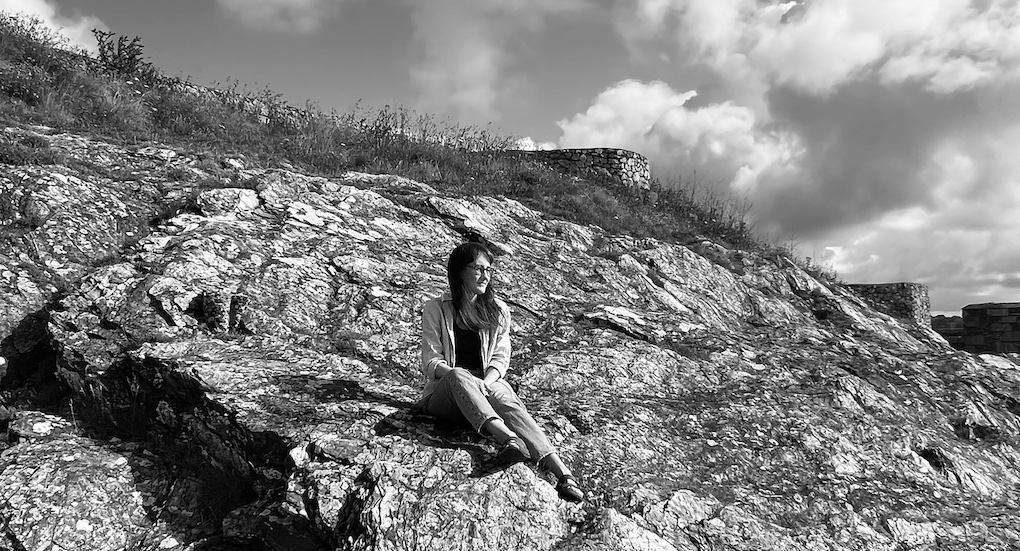by Luke Stone
Q. What does a day in the studio look like?
I generally divide my time in the studio into either drawing and printmaking days or painting days. If I’m working on monotypes then I have to move fast as the paint dries quickly, so there is a sense of energy and of just getting ideas out.
When I’m painting things are slower and more contemplative as I’m constantly evaluating different marks and happy accidents and then making adjustments. I’ll normally start by looking through any reference material or paintings from the previous few days, before putting them away and focusing on the board in front of me.
I always finish a day in the studio by washing my brushes and cleaning up my workspace so that I have a fresh start the next time.
Q. Could you tell us a bit more about the process of making a monotype?
A monotype is a very painterly way of printmaking. I use a brush or palette knife to paint watercolour onto a block, adding in a Japanese rice paste to create texture or water to create washes of flat pigment. The wetter the block the less able I am to predict how the final print will turn out as things start to move around a bit. This lessening of control and the unpredictable nature of this process is what I find so exciting. I then place a very thin piece of Japanese maruishi paper on the block to transfer the image. I like using this particular paper as it is very absorbent and gives the prints a less static look.
Q. How does a painting begin for you? And when do you know when it’s finished?
Whilst I initially make drawings and take photos of the landscape, these are rarely in front of me when I’m painting. I start a painting with a repetitive process of mark making, rubbing out and observation.This process becomes a way of teasing out memories of the landscape and finding them in the way a brush stroke looks or a reaction between the turpentine and the paint.
I often think of painting as meditation as it allows me to switch off and just focus on what is in front of me. However, in trying to search for these landscapes that are buried somewhere in my subconscious there is a push and pull between what I think I can see in my head and what comes out on the board. Sometimes there are moments where I feel as though the painting has locked me out and the landscape will have to remain, in my view, partially remembered. Other times things will just click into place and I feel as though I’ve managed to capture a fleeting glimpse of what it was like to be in that landscape.
Q. Where do you find your inspiration comes from, currently living away from the sea?
The sea is often where I find my inspiration, and I think living away from the coast has only made that more apparent! I think it’s because the sea can completely take over all my senses in a way that other landscapes don’t quite match; the roar of the waves or their gentle lapping against the shore, the play of light on the water, the way the weather can roll in so fast and completely transform the landscape, even the smell of the seaweed! Tapping into those memories through painting continues to inspire.
Q. What inspired this latest collection?
The Waiting Lights series has in part been inspired by the large ships often seen anchored in Falmouth Bay. Seeing their lights floating on the horizon in the early evening has become synonymous with my time living and working in Falmouth and every return visit since.
The paintings are an amalgamation of landscapes observed and the time spent searching for them again in the paint. Some details of the landscape may be left out or forgotten but what remains taps into a more visceral memory of the landscape instead.


